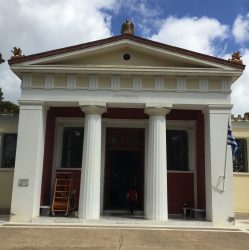This blog post will discuss the reading “Censorship Is” by Nicole Moore, which is an excellent read for all of you internet surfers who want to learn more about the history of censorship. What is the first thing that comes to mind when you hear the word “censorship”? For me, the word censorship involves an organization, school district, or government which chooses to regulate an individual’s right to free speech. Moore crafts an excellent article in which they immediately highlight some of the changes of censorship over time. Censorship previously resided in a binary model of libertarian versus a protectionist divide, an interpretation of this stance is just how far should censorship be allowed to go in protecting the population from vulgarity, nudity, and racism. Let’s take the idea of censorship and broaden it, after all, it is this “new censorship” that seems to be the one most ready to prompt criticisms. The new form of censorship is fairly new to discussion, it encompasses a larger array of topics that weren’t previously covered, at least in Australia. It is now seen to encompass all forms of regulations of books, newspapers, journals, films, and more, in which a government can interrupt, distort, or even remove the work of the creator to the general audiences. It is through the censorship of books, movies, and so on which turns the issue of censorship into a social subject. Treating censorship as a social issue can also be used to broaden how we view censorship, which can also allow a psychoanalytical gaze into censorship, meaning that there can be implicit and explicit forms of censorship. Focusing on the social issues of censorship, you must first identify who is in control of censorship and who is the target of the censorship. In other words, who is being oppressed by the censor and who is oppressing. This can be individuals or groups of people who participate in this power struggle, one example of censorship comes from the book “James and the Giant Peach” (1961). The centerpiece of the book was its exact reason for its attempt at being censored in areas, the book could have taught children and students to act out against authority figures and get into shenanigans. In this instance the children and readers of the book would be the oppressed, while school boards and parents the oppressors. It is interesting to see how the role can be played out in something as simple as a children’s book. Another point Moore makes is the use of language and symbolic power, in this case it was described by Bourdieu originally, but still inferring that language as an object cannot be a closed system. Closing off language to individuals produces negative communication, which offsets hierarchies of power that are hard to map in the social world. Putting this into simplest terms, if you regulate the use of certain words you can ultimately undermine an individuals worth. It is these kinds of power struggles that convey the meaning of censorship to a wider audience, and Moore does an excellent job at exposing the oppression in censorship over time.
Hello world!
Welcome to Burning Idea Sites. This is your first post. Edit or delete it, then start blogging!

